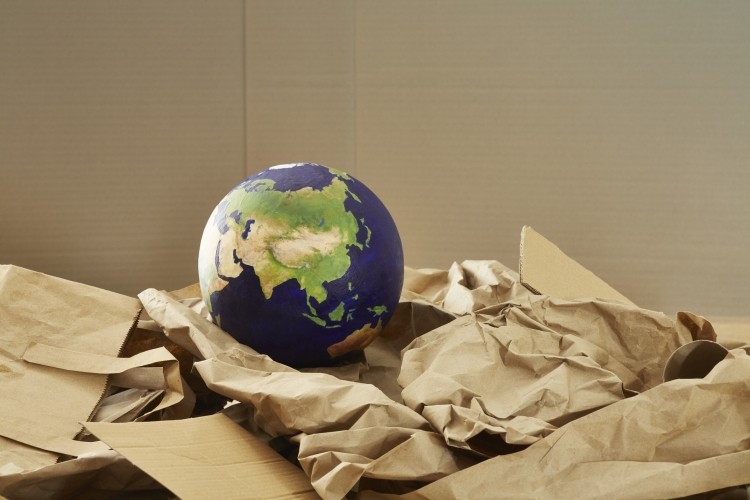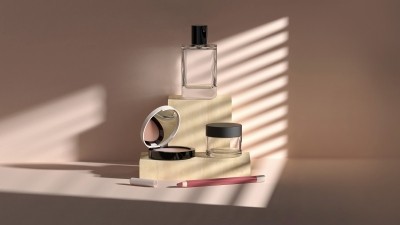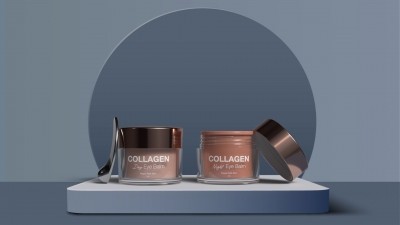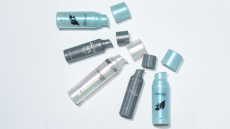Eliminating secondary packaging can improve brand image and reduce costs, said EPOPACK CEO

As consumers of cosmetics and personal beauty care products continue to become better educated about environmental issues, the demand for products that incorporate elements of sustainability continues to rise. In a study conducted by market research firm Statista last year, 30% of survey respondents indicated that sustainable and efficient shipping practices are essential to a brand’s sustainability practices. Further, 23% agreed sustainable and minimal packaging was also important.
Companies have responded to these demands in various avenues and methods, including but not limited to reformulating existing products with more ethically sourced ingredients, launching new product lines incorporating natural preservatives, and reducing or eliminating waste from unnecessary packaging.
CosmeticsDesign spoke with Amy Pan, CEO of EPOPACK, to learn more about how their company works with manufacturers and suppliers to the US cosmetics and personal beauty product industry to eliminate unnecessary secondary packaging materials specifically. EPOPACK, a Taiwan-based packaging company, serves clients worldwide with alternatives to help reduce packaging and shipping costs and offers options to help manufacturers and suppliers provide consumers with more environmentally friendly products.
Primary benefits
The primary benefit of eliminating secondary packaging is a reduction in disposable waste that ends up in landfills. Unnecessary outer boxes and inserts are typically not retained by the consumer and usually go straight into the trash – often, this packaging does not qualify for recycling.
A recent EPOPACK press release states that “removing unnecessary packaging saves the environment and showcases brands’ sustainability effort and value.” For brands prioritizing consumer demographics like Gen Z, who has demonstrated a strong interest in environmental sustainability, removing secondary packaging can help improve a brand’s “sustainability image by reducing waste and using eco-friendly materials. This communicates the brand’s commitment to sustainability and environmental responsibility that the eco-friendly consumer looks for,” as further explained in the press release.
Having eliminated unnecessary additional packaging materials, brands can utilize recyclable primary packaging options to improve sustainability efforts further. EPOPACK offers primary packaging options made with PET (polyethylene terephthalate), the most eco-friendly plastic in the world, and is a fully recyclable material (international recycle code #1).
Concerns about secondary packaging removal
As with any change to a product’s packaging, certain risk factors and concerns must be evaluated before implementing secondary packaging removal. The decision “comes with a lot of benefits; however, before you jump on this idea, it is important to make sure you have a strong primary packaging that can replace all the functions and additional services that secondary packaging provides, such as the primary packaging should be shatterproof and should be able to have all the product information on it,” explained Pan. Cosmetics and personal care manufacturers may also need to reconsider tamper-proof options to ensure product safety and sterility, and the addition of a tamper-proof label is a popular solution to this potential issue, Pan shared.
One of the most pressing concerns about eliminating secondary packaging is the potential impact on product shelf life. However, this, too, can easily be mitigated with consideration of the primary packaging materials. “The factors with the most impact on the product shelf life are air, light, and temperature,” said Pan. “For secondary packaging, it mostly enhances the light barrier; however, it can be easily achieved by selecting opaque packaging.
Secondary and tertiary benefits
An added benefit to eliminating secondary packaging is the opportunity for cosmetics and personal care product manufacturers to improve their brand image and enhance product visibility on retail shelves. As detailed in the EPOPACK press release, “according to retailers’ analyses, products that don’t have secondary packaging sell better, because consumers want to see what they are paying for before buying it.”
Utilizing a transparent or opaque primary packaging option allows consumers to better visualize the product, which “be especially beneficial for formulations that have a unique color or appearance.” This can be a determining factor for some consumers when purchasing in-store and online.
Another benefit to removing unnecessary packaging materials is cost-savings to the manufacturer or retailer, which can also be passed along to the consumer. As explained further in the EPOPACK press release, “smartly designed primary packaging can offer a combination of durability and transparency without the need for secondary packaging,” allowing brands to save on material cost, reduce shipping weight, and even save space on retail shelves to increase product availability to the consumer.
“There are a lot of choices of secondary packaging in terms of the material, the size, the coating and the quantity,” added Pan. “Therefore, the ecological figures and cost that you can save from getting rid of it can be very different,” and can be tailored to a brand’s (and a consumer’s) unique needs.
Sustainable branding in 2023
As cosmetics and personal care product brands continue to search for different methods to maintain a competitive edge with consumers, it will be intriguing to see which companies adopt secondary packaging elimination as a feasible option. The elimination of secondary packaging may not be a viable option for some companies. Still, for those cosmetics and personal beauty care brands interested in improving their environmental sustainability, it is a compelling choice to consider. The decision offers significant potential for brands to reduce shipping and material costs and reinforce an eco-friendly image with targeted consumer demographics.
















